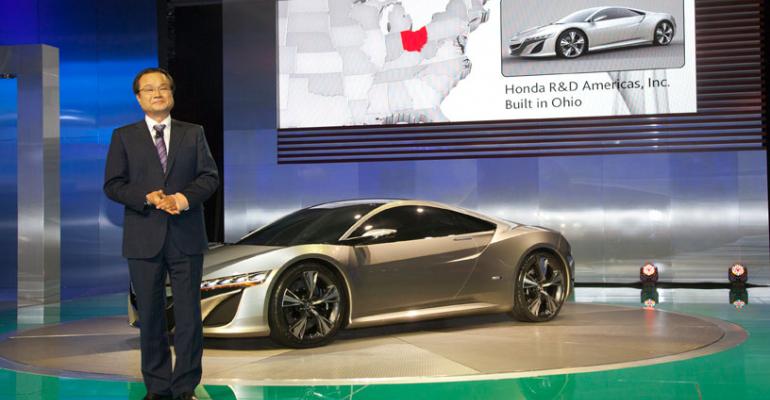ROCHESTER, MI – Honda’s renewed association with Formula 1 racing is “more financially responsible” than previously, a top U.S. official tells WardsAuto.
Honda pulled out of F1 in 2008 during the global economic downturn, but Honda President Takanobu Ito announced last month the auto maker would return to the series, albeit indirectly as an engine supplier to McLaren.
Mike Accavitti, senior vice president-automobile operations for American Honda, says the new setup with McLaren is a “more financially responsible way” for Honda to participate in F1, alluding to high cost of owning or directly sponsoring a team.
The Japanese auto maker participated in F1 racing from the mid-1960s until 2008, including as an engine supplier in the 1980s and early 2000s.
The complete exit from F1 five years ago reportedly saved Honda ¥20 billion ($200 million).
While it may seem like a good opportunity for cross-promotion, Honda’s return to F1 isn’t a result of the upcoming revival of the Acura NSX supercar, Accavitti says. The NSX is due in the U.S. in about two years.
“The re-entrance into Formula 1 is really a global Honda play,” he says, adding Acura and the NSX “will be a third-party beneficiary of that.”
Honda and McLaren will participate in the FIA Formula 1 World Championship, beginning with the 2015 racing season.
For the 2014 season, F1 is changing over from 2.4L V-8 engines to 1.6L turbocharged direct-injection V-6s with energy-recovery systems, a switch that plays to Honda’s strengths, Accavitti says.
“As they change their engines to smaller-displacement, turbocharged, we can bring immediate knowledge and support to McLaren.”
Honda last year introduced direct-injected engines in mass-market vehicles, including in its popular Accord midsize sedan.
And while Acura is mum on the upcoming NSX’s powertrain, a concept version of the car pairs a DI V-6 to the brand’s new “Sport Hybrid” Super-Handling All-Wheel-Drive system.
Sport Hybrid SH-AWD mates one electric motor to a dual-clutch transmission and has two additional electric motors that can send positive or negative torque to front wheels during cornering maneuvers.
In the past, Honda used its racing program as a test bed before filtering new technologies down into mass-market vehicles, and this time around will be no different.
“There’s (engine and material) technology in this new Formula 1 series that will, we believe, find its way back into passenger cars,” Accavitti says.
He also sees the new F1 participation as a great training ground for engineers, who must learn to deal with severe time and budget constraints well beyond those they face in developing passenger vehicles.





